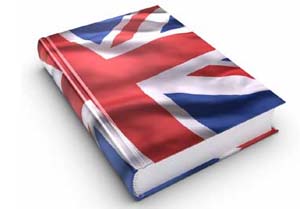 |
|
 |
|
| Visite: 1586 | Gradito: |
Leggi anche appunti:William blakeWILLIAM BLAKE William Blake was born in London in 1757, his family was poor Sistema scolastico italianoSISTEMA SCOLASTICO ITALIANO Scuola materna Istruzione di grado preparatorio, Percy Bysshe ShelleyPercy Bysshe Shelley Life and works: Shelly was born in the 1792. He spent |
 |
 |
(1) The loss of the American colonies
George III became king in 1760 and he surrounded himself with incompetent ministers. The relations between Britain and American colonies were deteriorating; because the Navigation Acts imposed to America to trade only with the home country. The colonies were forced to sell raw materials at low prize and to buy manufactured goods at high prize. British imposed in the beginning a lot of unpopular taxes that later (in 1770) were abrogated, except that on tea. In 1773 in Boston port a shipload of tea was thrown in the ocean. This was the beginning of the American War of Independence. The colonists organised an army led by George Washington and in 1776 signed in Philadelphia the Declaration of Independence written by Thomas Jefferson. The British army lost the war and in 1783 with the Treaty of Versailles recognised the independence of the colonies. George Washington became in 1787 the first president of USA.
Britain was the first country where the Industrial and Agricultural Revolutions took place. The development of industries was due to two principal causes: 1. Increase of technology 2. Stimulation of trade. English trade grew during Elizabethan Age. In this period born many chartered companies, companies with the permission to trade given by the Queen, and the Bank of England, that provided founds to trade development. During the reign of George I became technological inventions that transformed Britain in an industrial country. A lot of people, before this period, worked in the cottages, spinning and weaving wool. The first machines helped this kind of workers. At first these machineries worked with the strength of water; then, after James Watt's discovery, with steam power thanks to coal. New techniques put many people out of work, and employed labour of women and children in mines and factories. Living conditions of the workers were terrible. In the Midlands developed china factories. During the reign of George III the transports were improved with new roads and waterways.
The agricultural revolution was connected with the industrial revolution and used the new technologies. This revolution transformed medieval "open fields" in large farm units divided by enclosures, and improved breeding and farming techniques. During the Middle Age, enclosures were used only for sheep areas; now with the Enclosure Acts they were used also in agriculture.
During the 18th century population growth, thanks to disappearance of the plague and the more productive use of the land. In industrial society there were 2 main classes: the wage-payers (who lived by owning) and the wage-earners (who lived by earning). In these years there was a shifting of population from the agricultural and commercial areas of the south to the north and the midlands. In midlands factories and houses of poor workers (mushroom towns) were built near coalfields. Women and children were exploited more than men, but everybody lived and worked in terrible conditions. Their life expectancy was about 20 years.
During the last 30 years of the 18th century a new sensibility arose and this period was called Pre-Romantic Age. This new feeling was strongly in opposition with Enlightenment. Reason lost his power to correct evils of society like miseries and ugliness of industrialisation, and was seen as a repression of emotion and feelings. Related to this was an interest in melancholy and a meditation on the suffering of poor people and on death. There was also a rediscovery of Middle Ages' culture that leaded to Gothic. Nature wasn't an abstract and philosophical concept but a representation of reality. A new aesthetic theory born, based on individual consciousness rather than on the imitation of classics' rules.
From the conflict between sense and sensibility derived the Sublime: this term refers to a linguistic, literary or artistic from which expresses feeling of fear and horror created by what is infinite and terrible, like Burke says in On The Sublime.
Edmund Burke: wrote about the political events of his time, he was in opposition with the revolution
Thomas Paine: with the Rights of Man supported French Revolution, advocated republicanism, the abolition of slavery and the emancipation of women. He was indicted for treason by British government.
William Godwin: criticised society of his time. He had confidence in the power of the human reason.
Mary Wollstonecraft: Godwin's wife, she carried on a vindication of the rights of women.
In 19th century poets showed a tendency to use subjective, autobiographical material to express a new and personal experience of life. Early Romantic poets reacted to the social changes taking place in the country with a re-evaluation of rural origins and a sense of melancholy and sadness. The most important pastoral poet was William Cowper; in his works nature was a plaything, a source of innocence and delight. The cult of a simple and primitive life and a growing interest in folk tradition were responsible for the widespread success of Ossianic poetry, a cycle of poems by a legendary Irish warrior, called Ossian, who lived in the 3rd century in Scotland. Poets as Thomas Gray and Thomas Percy found new sources in Celtic and Scandinavian legends and mythology. Another school of poets was "the Graveyard School", called in this way for the melancholy tone and the choice of cemeteries, ruins and stormy landscapes as the setting for their poems. Thomas Gray and Edward Young belonged to this school.
The end of the 18th century brought Gothic novels to popularity. The features of the Gothic novels were:
Some examples of this kind of novels are The Mysteries of Udolpho by Ann Radcliffe and Frankenstein by Mary Shelley.
He was interested in Celtic and Icelandic poetry, study of classics, simple and primitive culture and humble people. He had some Romantic characteristics, like the use of the first person singular to express emotions, but was also linked to neoclassic tradition, for his classic language.
Elegy written in a Country Churchyard:
The poem opens with the contemplation of a country churchyard at twilight. The setting is typically Romantic and also the themes with melancholy tone, the desire of solitude, the meditation of human mortality and the transience of human beings. The scene is described by the poet himself in order to transmit emotions. There's also a meditation on forefathers of the village, the peasants who lie in their graves, and the rural place acquires great importance. Their poverty forbade them to become famous in life, but also to do great evil or to fall prey of ambition. The final message is that everyone is equal in death. The tomb becomes a link between the living and the dead.
(10) William Blake (1757-1827)
Blake's poems can be divided in 2 groups:
Songs of Innocence: where he deals with childhood as the symbol of innocence connected with happiness, freedom and imagination. These poems are written in a simple, musical language, with a lot Christian symbols.
Songs of Experience: where we find a more pessimistic view of life. These poems are strictly connected with these of songs of innocence. Blake deals with adulthood as the symbol of experience.
Innocence and Experience coexist and complete themselves, creating two different points of view on reality. In Blake's poetry there's the triumph of imagination, in contrast with Age of Enlightenment. He takes his ideas from Paine, Godwin, Voltaire, Diderot, the Bible and Milton. Blake is a visionary poet and believes in illuminating power of his visions. Vision and imagination are the means through which man can know the world. The power of creating things and understanding reality and society belongs to the poet, God and the child. The man can know himself with the tensions between opposite states of mind. These complementary opposites coexist also in the God and create progress. Blake is interested in the political and social problems: he condemns the slavery and he shares the principles of the French Revolution. Later, disillusioned, he focuses his attention of the evil consequences of the Industrial Revolution.
(11) Ann Radcliffe (1764-1823)
Her novels showed the typical features of Gothic fiction: complicated and improbable plots, dark and mysterious settings and sublime images. Her tales are set in Italy because she identified Catholicism with Inquisition. She always created flat characters, divided in bad and good. In her descriptions she used a combination of internal and external points of view.
The protagonist is Emily that is the typical gothic heroine surrounded by terrifying male characters. At the beginning of this passage she arrives at the castle, an example of gothic architecture, and asks for her aunt, that is called Signora in order to create Italian atmosphere. Then Emily is leaved alone in a dark room by Barnardine, a strange servant. The description of the room, with the opposition of light and darkness, is menacing and creates suggestion in the reader with the detailed description of torture instruments and of the bloody corpse she finds behind a curtain.
(12) Mary Shelley (1797-1851)
Frankenstein
The form of this novel is epistolary and is told by three different male narrators that are also the principal characters: Walton, Frankenstein and the monster. Walton is an explorer characterised by Romantic elements and represents the man who tries to go beyond human limits. Frankenstein and the monster are complementary: they both suffer for their solitude and their desire of good is overcome by desire of hate and revenge. In particular the monster ties to make good things, but is natural sensibility is hurt by the repulsion and the terror he produces in everyone.
To write and to speak about monster's creation she knew the science and in particular chemistry. Mary Shelley is interested in a number of aspects of human society, including property, social injustice and education.
In this novel she sympathizes with the monster, created by doctor Frankenstein, but at the same time she's afraid of the consequences of his actions. Like the other English intellectuals of the time, she was at the same time interested and afraid of revolutionary ideas. The monster represents the Rousseau's natural man that isn't influenced by civilisation and society. Another important influence is the work of Romantic poets in general.
 |
| Appunti su: |
|
| Appunti Spagnolo |  |
| Tesine Francese |  |
| Lezioni Tedesco |  |